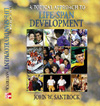|
 |  Life-Span Development: A Topical Approach John W. Santrock
Endings Death and Grieving
Learning Objectives1.Define death and life/death issues, including:- the debate among medical experts whether brain death, a neurological definition of death, should mean the higher and lower brain functions or just the higher cortical functions
- ways to prepare for catastrophic illnesses or emergency situations, and how the Natural Death Act and advanced directives have affected the process
- euthanasia as a painless way to end the life of someone who is suffering from an incurable disease or disability, understanding the distinctions made between active and passive euthanasia and the controversy of physician-assisted suicide
- the need for more humanized care of the dying, including hospice care
|
 |  |  | 2.Discuss death within sociohistorical and cultural contexts, considering:- the philosophical or religious beliefs about death inherent in most societies, as evidenced by their rituals, and the fact that most cultures do not view death as the end of existence, but rather see spiritual life as continuing
- that the United States is often described as a death-denying and death-avoiding culture
|
 |  |  | 3.Explore the developmental perspective on death, noting that:- although death is more likely to occur in late adulthood, it can come at any point in the life span, and understanding the different primary causes of death throughout the life span
- concepts of death change from infants (who have no concept of death) through childhood, adolescence, and the different stages of adulthood
|
 |  |  | 4.Describe how individuals face their own death, focusing on:- Kübler-Ross' five stages of dying, noting that not all individuals go through the same sequence, with some struggling until the end
- how perceived control and denial may work together as an adaptive orientation of the dying individual, although denial may also be maladaptive, depending on the circumstances
- most deaths in the United States occur in hospitals, which has advantages and disadvantages, and though most people say they would rather die at home, they worry about being a burden; hospice offers a humanized environment for dying
|
 |  |  | 5.Explain how individuals cope with the death of someone else, including the following issues:- most psychologists recommend an open communication system with a dying person, emphasizing the dying individual's strengths rather than pathology or preparation for death
- grief is multidimensional and, in some cases, grieving may go on for years, and the grieving process may stimulate individuals to try to make sense out of their world
- often the most difficult loss is the death of a spouse, raising the bereaved's risk factors for many health problems, although social support can benefit the widowed person
- forms of mourning may vary from one culture to another, with the funeral being the most important aspect of mourning in many cultures
|
|
|



 2002 McGraw-Hill Higher Education
2002 McGraw-Hill Higher Education